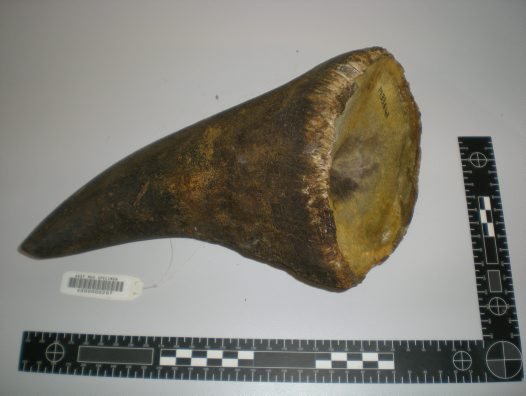The nose knows
The tracking of illegal poaching and animal trade has taken the wildlife forensics world by storm as more and more animals are maimed and killed for their valuable body parts in developing countries around the world. Often, the animal part that has been collected for trade is unidentifiable at the time of initial examination, and the means by which scientists can identify the part has been too time consuming and costly to be of any use.

© Australian Museum
The illegal animal and plant trade brings in somewhere between $7 and 23 billion USD annually and has shown no sign of slowing, a figure that is worrying to wildlife forensic scientists globally. The lack of a quick and effective testing method to identify illicit biological material presents a costly issue as law enforcement officers race against the clock to prosecute poachers. Slow testing times in developing nations, insufficient data and the subsequent lack of hard evidence creates huge problems when trying to keep track of where material is coming from and who is to be held accountable.
In the past, wildlife detection dogs have been employed to alert officers of the presence of illicit material, but they can do little to identify the animal the material came from. However, the use of dogs does suggest animals have different odour profiles that dogs can recognise and distinguish. In this study, scientists from the University of Technology Sydney and the Australian Centre for Wildlife Genomics here at AMRI aimed to test this method further and began screening the odour profiles of both black and white rhinoceros horns.

© Australian Museum
By analysing the presence of volatile organic compounds (VOCs) and using comprehensive two-dimensional gas chromatography, scientists were able to compile enough data to see a definitive trend separating the plots created by each test of the different types of horn samples. Specifically, black rhinoceros samples showed tightly clustered data points demonstrating similar odour profiles, while white rhinoceros samples had data points spread widely across the plot showing more variation.
The success of being able to separate the odour profile of the white rhinoceros from that of the black rhinoceros demonstrates the potential for future success when profiling samples from different unknown material recovered from the illegal animal trade. As a result, a database of odour profiles of different families, genus’, and species can be gathered and used as a reference for comparison while tests are being run, therefore making the identification process much faster at the time of seizure of the illicit materials. The long-term plan is to develop this method into a rapid screening device employable at the point of detection. The use of odour profiling may be the significant breakthrough needed to slow the illegal animal trade to a stop. The faster the screening, the faster the identification, and therefore there is a higher chance of catching poachers and smugglers in the act.
Madison Myers, AMRI
More Information
- Ueland, M., Ewart, K., Troobnikoff, A. N., Frankham, G., Johnson, R. N. and Forbes, S. L. 2016. A rapid chemical odour profiling method for the identification of rhinoceros horns. Forensic Science International. In Press.

